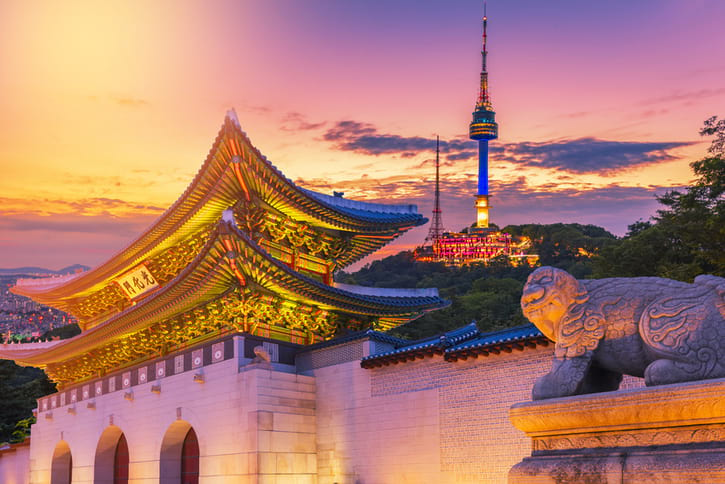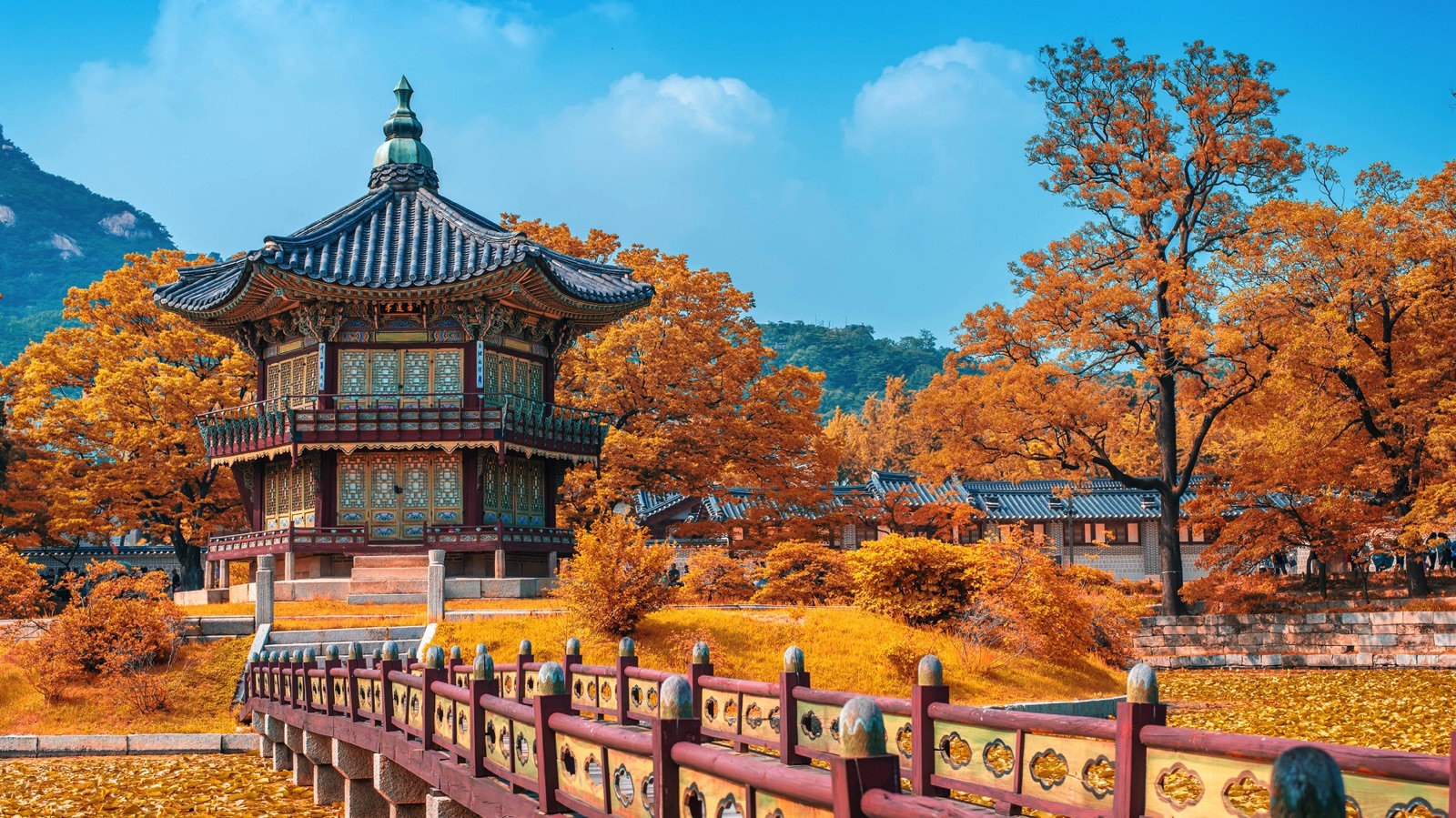
Seoul, the pulsating heart of South Korea, is a city that defies easy categorization. It’s a vibrant tapestry woven with threads of ancient history and futuristic innovation, a place where serene temples stand sentinel beside gleaming skyscrapers, and where bustling street markets spill over with flavors and stories. From the majestic palaces of its royal past to the cutting-edge technology that defines its present, Seoul offers an unforgettable experience for every traveler. This comprehensive guide will delve into the top attractions, uncover its rich history, provide essential travel tips, explore accommodation options, navigate its efficient transportation, and pinpoint the best times to immerse yourself in this captivating metropolis.
Seoul’s Top Attractions: A Journey Through Time and Culture
Seoul’s allure lies in its diverse range of attractions, catering to history buffs, culture enthusiasts, foodies, and modern explorers alike.

Related Articles about Seoul: A Metropolis Where Tradition Meets Tomorrow:
- Slovakia: A Tapestry of Castles, Caves, and Carpathian Charm
- Kazakhstan: Unveiling the Heart of Central Asia
- Castles, Cobblestones, and Comfort: Unveiling the Best Hotels in the Czech Republic
- Beyond the Hallyu Wave: A Comprehensive Guide to Experiencing the Magic of South Korea
- Cape Town: A Symphony of Natural Wonders, Rich History, and Vibrant Culture
- Gyeongbokgung Palace: The undisputed crown jewel of Seoul, Gyeongbokgung is the largest and most beautiful of the Five Grand Palaces built during the Joseon Dynasty. Its expansive grounds, adorned with intricate architecture, serene ponds, and meticulously manicured gardens, offer a glimpse into the grandeur of royal life. Don’t miss the changing of the Royal Guard ceremony, a colorful and traditional spectacle.
- Changdeokgung Palace and Huwon (Secret Garden): A UNESCO World Heritage site, Changdeokgung is renowned for its harmonious integration with its natural surroundings. The highlight is the Huwon, a secluded rear garden that served as a royal retreat. Its picturesque ponds, pavilions, and ancient trees create an atmosphere of tranquility and beauty, particularly stunning during autumn.
- Bukchon Hanok Village: Step back in time as you wander through the narrow alleys of Bukchon, a charming traditional Korean village. Here, you’ll find hundreds of hanok (traditional Korean houses) with their distinctive tiled roofs and wooden structures, many still inhabited by residents. It’s a perfect spot for photography and experiencing the essence of old Seoul.
- N Seoul Tower (Namsan Tower): Perched atop Namsan Mountain, this iconic landmark offers breathtaking panoramic views of the sprawling city. Ascend to the observation decks for an unforgettable vista, especially at sunset when Seoul transforms into a sea of twinkling lights. The tower also features love locks, a popular spot for couples.
- Myeongdong: A shopper’s paradise and a culinary adventure, Myeongdong is Seoul’s premier shopping district. Bustling with international brands, Korean cosmetic shops, and trendy fashion boutiques, it’s a sensory overload in the best possible way. By night, the streets come alive with countless street food stalls offering delicious local delicacies.
- Insadong: This vibrant cultural street is a haven for traditional Korean arts and crafts. Browse through antique shops, art galleries, tea houses, and stalls selling calligraphy brushes, pottery, and hanji (traditional Korean paper). It’s the perfect place to find unique souvenirs.
- Gangnam: Made famous by Psy’s hit song, Gangnam is Seoul’s affluent and trendy district. It’s characterized by upscale boutiques, stylish cafes, vibrant nightlife, and entertainment venues. Explore Apgujeong Rodeo Street for designer fashion and Cheongdam-dong for luxury brands.
- Dongdaemun Design Plaza (DDP): A futuristic architectural marvel designed by Zaha Hadid, the DDP is a cultural hub hosting exhibitions, fashion shows, and events. Its fluid, metallic exterior is a striking contrast to the traditional architecture found elsewhere in the city.
- War Memorial of Korea: A somber yet essential visit, this museum offers a poignant and comprehensive account of Korea’s military history, particularly the Korean War. It’s an educational experience that provides crucial context for understanding the nation’s journey.
- The Demilitarized Zone (DMZ): A day trip to the DMZ, the border separating North and South Korea, is a deeply moving and thought-provoking experience. While technically outside Seoul, it’s a must-do for many visitors. Tours typically include visits to observation points, infiltration tunnels, and the Joint Security Area (JSA).

A Glimpse into Seoul’s Rich History
Seoul’s history is a saga of resilience, innovation, and enduring cultural heritage. Founded in 1394 by King Taejo as the capital of the Joseon Dynasty, it was then known as Hanyang. For over 500 years, it served as the political, economic, and cultural center of Korea, witnessing the rise and fall of dynasties, the flourishing of arts and sciences, and the implementation of Confucian principles.
The Joseon era left an indelible mark on the city, with the construction of magnificent palaces and the establishment of a rich cultural landscape. However, Seoul’s history is also marked by periods of immense hardship. It suffered invasions, colonial rule by Japan from 1910 to 1945, and the devastating Korean War (1950-1953), which left much of the city in ruins.
Despite these challenges, Seoul demonstrated remarkable resilience. It rose from the ashes to become a global economic powerhouse and a hub of technological advancement. The city’s rapid modernization is evident in its impressive infrastructure and cutting-edge technology, while its commitment to preserving its heritage ensures that its past remains a vibrant part of its present.
Seoul Travel Tips: Navigating the Metropolis with Ease
To make your Seoul adventure seamless and enjoyable, consider these essential travel tips:
- Visa Requirements: Check visa requirements for your nationality well in advance of your travel.
- Language: While many Koreans, especially in tourist areas, speak some English, learning a few basic Korean phrases like "Annyeonghaseyo" (Hello) and "Kamsahamnida" (Thank you) will be greatly appreciated.
- Currency: The currency is the South Korean Won (KRW). Credit cards are widely accepted, but it’s good to have some cash for smaller shops and street food.
- Connectivity: Purchase a local SIM card or rent a portable Wi-Fi device (egg) at the airport for constant internet access, which is invaluable for navigation and communication.
- Etiquette: Koreans generally value politeness and respect. It’s customary to use two hands when giving or receiving something, and to bow slightly when greeting elders. Remove your shoes before entering homes, temples, and some restaurants.
- Power Adapters: South Korea uses Type F power sockets (two round pins).
- Tipping: Tipping is not customary in South Korea.
- Emergency Numbers: Dial 112 for police and 119 for fire and medical emergencies.
Accommodation Options: A Bed for Every Budget and Style
Seoul offers a diverse range of accommodation to suit every traveler’s needs and budget:
- Luxury Hotels: For a lavish experience, consider hotels in areas like Gangnam or Myeongdong, offering world-class amenities, stunning city views, and impeccable service. Examples include The Shilla Seoul, Lotte Hotel Seoul, and Four Seasons Hotel Seoul.
- Boutique Hotels: Seoul boasts an array of stylish boutique hotels, often with unique designs and a more intimate atmosphere, particularly in areas like Hongdae or Itaewon.
- Mid-Range Hotels: Comfortable and well-equipped hotels can be found throughout the city, offering a good balance of price and quality. Areas like Insadong or Jongno are good options.
- Guesthouses and Hostels: For budget-conscious travelers, guesthouses and hostels provide affordable dormitory-style or private rooms. Many are located in vibrant neighborhoods and offer opportunities to meet other travelers.
- Hanok Stays: For an authentic cultural experience, consider staying in a hanok guesthouse in Bukchon or other traditional neighborhoods. You’ll sleep on a traditional Korean floor mat (yo) and experience the charm of traditional Korean architecture.
- Airbnb: A popular choice for those seeking a more local feel or needing amenities like a kitchen, Airbnb offers a wide selection of apartments and rooms across the city.
Transportation: Navigating Seoul’s Efficient Network
Seoul’s public transportation system is renowned for its efficiency, cleanliness, and affordability.
- Subway: The Seoul Metropolitan Subway is the backbone of the city’s transportation. It’s extensive, easy to navigate with clear signage in Korean and English, and connects virtually all major attractions. Purchase a T-money card (a rechargeable transportation card) for seamless travel.
- Buses: Buses complement the subway system, reaching areas not directly served by the metro. Different colored buses indicate their routes and coverage.
- Taxis: Taxis are readily available and relatively inexpensive. They are a convenient option for shorter distances or when traveling with luggage. Standard, Deluxe (black), and Jumbo (large) taxis are available.
- KTX (Korea Train eXpress): If you plan to travel to other cities in South Korea, the KTX high-speed train is an excellent option, with Seoul Station serving as a major hub.
- Walking: Many of Seoul’s attractions are within walking distance of each other, especially within specific neighborhoods like Insadong or Bukchon.
Best Time to Visit Seoul: Embracing the Seasons
Seoul experiences four distinct seasons, each offering a unique charm:
- Spring (March to May): This is arguably the most pleasant time to visit. The weather is mild and comfortable, with temperatures ranging from 10°C to 20°C (50°F to 68°F). Cherry blossoms bloom beautifully in April, creating a picturesque landscape.
- Summer (June to August): Summers are hot and humid, with average temperatures between 25°C and 30°C (77°F to 86°F). Expect occasional rain showers and typhoons. However, summer is also a time for vibrant festivals and lively outdoor activities.
- Autumn (September to November): Autumn is another ideal time to visit, with crisp air, clear skies, and stunning fall foliage. Temperatures range from 15°C to 25°C (59°F to 77°F). The changing leaves in palaces and parks are a breathtaking sight.
- Winter (December to February): Winters are cold and dry, with temperatures often dropping below freezing, ranging from -5°C to 5°C (23°F to 41°F). Snowfall is common, transforming the city into a winter wonderland. It’s a great time for winter sports and enjoying cozy indoor activities.
Conclusion: An Unforgettable Urban Odyssey
Seoul is a city that captivates the senses and lingers in the memory long after you’ve departed. It’s a place where the whispers of ancient dynasties intertwine with the roar of a hyper-modern metropolis, offering an experience that is both deeply rooted in tradition and exhilaratingly forward-looking. From the grandeur of its palaces to the buzz of its shopping districts, the tranquility of its gardens to the thrill of its technological advancements, Seoul promises an urban odyssey that is as enriching as it is unforgettable. Pack your bags, embrace the adventure, and prepare to be enchanted by the dynamic spirit of Seoul.





